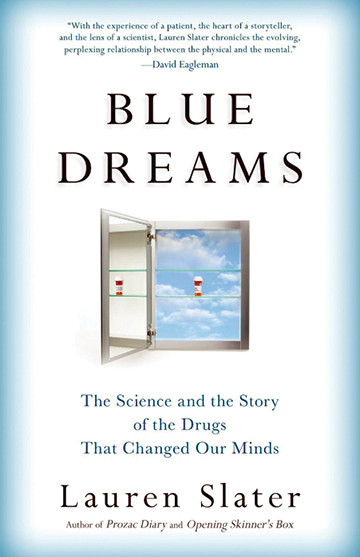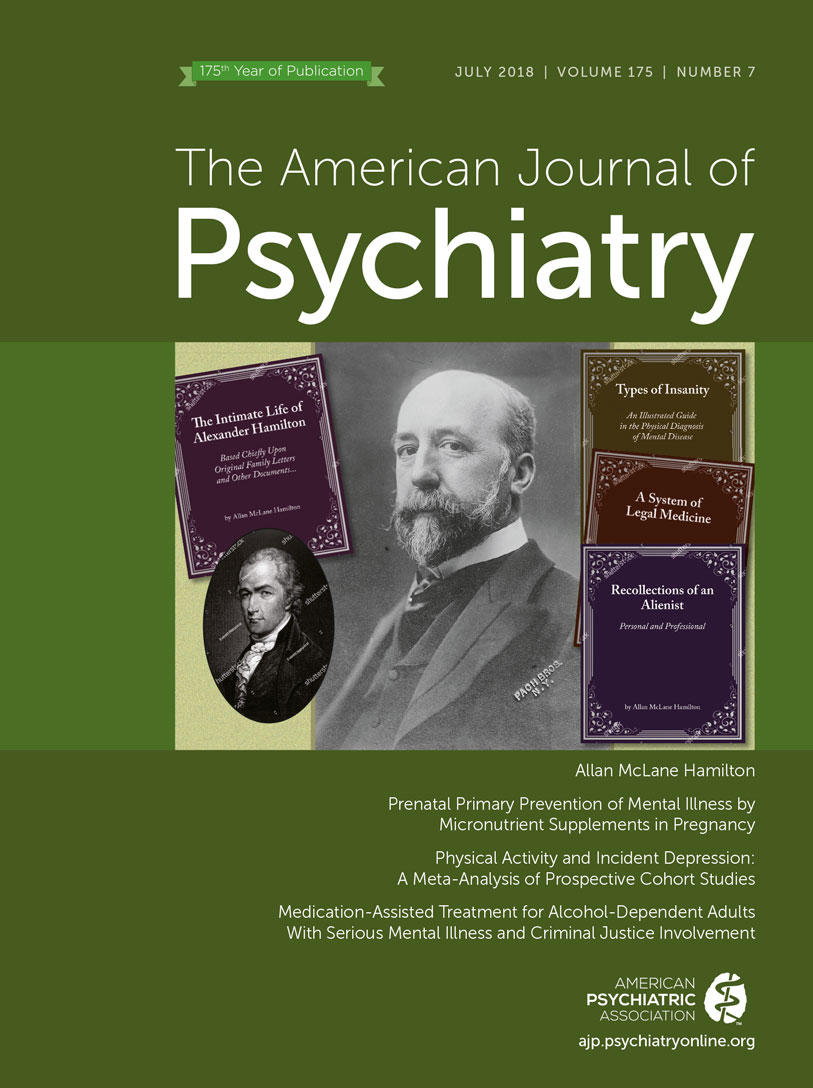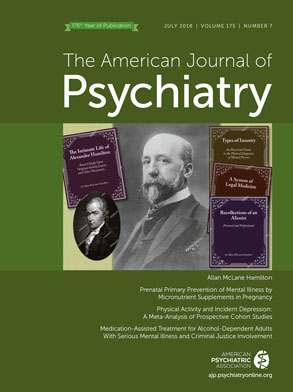I was at no point aiming for something comprehensive but rather for something riveting (p. xiv).
The author uses two elements in her attempt to achieve her aim. The first entails several well-documented, accurate, and indeed riveting and informative stories about the identification and evaluation of various psychopharmacological agents. Separate chapters are devoted to the discovery and evaluation of chlorpromazine, lithium, tricyclics and the monoamine oxidase inhibitors, and fluoxetine and the selective serotonin reuptake inhibitors. These are followed by a chapter on placebo and three chapters on possible treatments: psilocybin, 3,4-methylenedioxymethamphetamine (Ecstasy), and agents that affect memory consolidation, retention, or removal (PKM zeta and ZIP). The final chapter deals with deep brain stimulation.
The second element entails the author’s own heart-rending, very personal story of her 34-year struggle with severe mental illness—by her own description, bipolar disorder with depressive and manic episodes, as well as obsessions, compulsions, and psychotic experiences that included five psychiatric hospitalizations. Her account, which is dramatic rather than strictly chronological, lets readers glimpse how the author experienced some of the symptoms (psychosis, obsessions, mania, etc.) as well as the ups and downs of treatment selection, changes, and side effects over years of care.
The author’s personal accounts are inserted largely within the first four chapters, where she discusses the discovery of medications approved by the Food and Drug Administration. For example, during her recounting of the fascinating story of the discovery of imipramine and lithium, she also describes her experience with these agents as a patient—revealing their substantial side effects and total lack of efficacy in her particular case. In another instance, she explains a bit of the science behind the development of fluoxetine as well as the suicidal ideation risk, lawsuits, marketing challenges, and how marketing influences the public’s perception of not just fluoxetine but of many psychotropic agents.
The author is understandably ambivalent toward psychiatry and its treatments, having experienced both the benefits and some severe side effects of various medications, as well as the waning of their effectiveness over the years. “Prozac rescued me for decades when I was in my twenties, thirties, and forties, enabling me to write several books, and marry a man who was gentle and birth two babies” (p. 74). “Because of these drugs, I am able to think, to compose, and to move productively through my life, although I do struggle with aphasia” (p. xi); yet, “my kidneys are failing, I have diabetes, I am overweight, and my memory is perforated” (p. xi). Also, because of these drugs, “I have a mind that can appreciate the beauty around me,” but then, “I’m dying faster than you are, my body crumbling as a side effect” (p. xi).
The reader is likely to be engaged more emotionally than intellectually. The book is not a dispassionate assessment of the pros and cons of various treatments, nor does it show how these treatments reduce the morbidity and mortality of severe illnesses.
As the author blends scientific history (often emphasizing the more desperate or dramatic efforts) and her own experience, the result is too often a misleading characterization of psychiatry based on very old, completely outdated practices. For example, lobotomies are mentioned nine times throughout the book and insulin coma five times, while phenelzine (Nardil) gets a single mention. Walter Freeman (the ice pick lobotomist) gets four separate mentions and Timothy Leary gets five, but Donald Klein, Aaron T. Beck, and Herbert Meltzer are mentioned only one time each. The side effects of treatments get a big play, but there is no mention or discussion of the morbidity or mortality caused by these severe illnesses if left untreated. The only context against which to judge the therapeutic and untoward effects of these medicines is her own experiences with each.
Contextual and factual deficiencies include no mention of research that has made ECT safer or that has made brain stimulation without neurosurgery or seizures possible. Both transcranial magnetic stimulation and vagal nerve stimulation are mentioned only in the placebo chapter, as they “mostly seem to help people achieve remission if their depression is mild” (p. 226), despite published controlled trials that excluded mild depressions.
The author singles out psychiatry for an absence of biology: “If physical substrates of mental suffering do exist, psychiatry has so far been unsuccessful in definitively finding them. Therefore, when you take a psychiatric drug, you do so on faith” (p. x). She is either unaware or chooses to ignore the plethora of neurobiological findings—the results of hundreds of grants from the National Institutes of Health, the Research Domain Criteria initiative, and recent applications of these efforts in clinical decision making. Although this level of scientific detail can be difficult to make “riveting,” its absence leaves the reader uninformed.
The author does indeed raise some important questions that should be addressed:
1.
Because we recommend long-term maintenance medications, we must have systematic long-term data on the biological and clinical effects of the drugs; understand why, for some patients, the medications “wear off”; and know what to do when that happens.
2.
Is there overuse of medications for patients who seek medication for the unhappiness that occurs in everyday living?
3.
Do “therapy-free” medication check visits shortchange patients’ needs in the therapeutic relationship?
Unfortunately, the author undermines her own credibility with comments such as, “the CIA was rumored to be experimenting with [brain] implants to break down POWs and discredit rebellious citizens” (p. 316). This is one of several “evidence-free” allegations.
Too often, the author’s language and storytelling distort facts or have unfounded yet pejorative implications. For instance, in recounting Penfield’s pioneering work, she writes: “Despite the fact that the patient’s skull was sawed open like a pumpkin, the top cut off in a circle, the patient was awake and alert” (pp. 335–336), which creates the impression of a cavalier attitude without mentioning that the patient was pain free. Another example is: “Spitzer broke human suffering into quantifiable chunks, listing, for instance, all the known symptoms of major depression, of generalized anxiety disorder…” (p. 339). All the known symptoms? In fact, DSM categories are not intended to capture patient suffering, yet this turn of phrase makes all mental health professionals out to be heartless.
The author’s limited understanding of the scientific process produces misinformation. For instance, she writes that, “Lacking blood, tissue, or cells, psychiatrists had no choice but to retreat into pure description” (p. 338). Actually, the multicentury history of medicine begins with description and proceeds toward biological, neuropsychological, and epidemiological understandings as our technologies evolve.
Should patients or their families read this book? Not if they’re trying to make evidence-based care decisions. The book does not provide an objective rendition of the risks and benefits of treatment or the likely outcomes of any particular mental illness with or without treatment. The strong “antipsychiatry tone” is off-putting and undermines some important issues that the author raises. The author is an engaging storyteller, but while the book is “riveting,” it risks misleading some patients and families into assuming that her experiences (e.g., five hospitalizations, the development of diabetes) are sure to be their own. Clear disclaimers that her experience is personal—and not entirely generalizable—would have been helpful.


